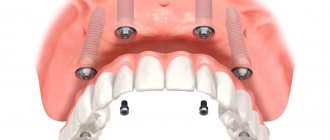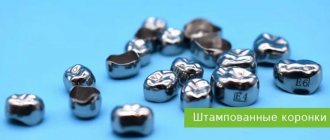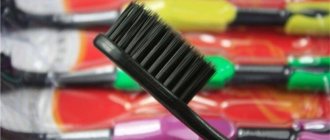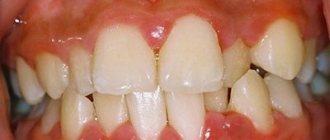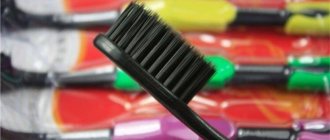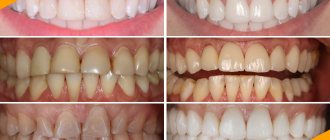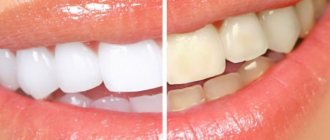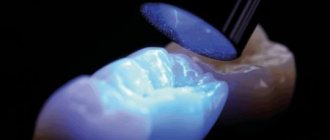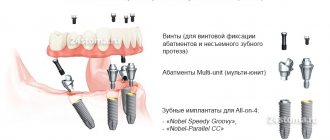Patients are more interested in the disadvantages of all-on-4 than the advantages. It's clear. Manufacturers of dental implants and dental clinics themselves willingly talk about the benefits of the popular protocol. But it is precisely the shortcomings that reveal the pitfalls that patients encounter during real prosthetics. What to prepare for and what to expect? Is it worth choosing “all-on-4” or is it better to take a closer look at other methods? All about all-on-4 implantation - pros and cons with an emphasis on the disadvantages.
What is fixed prosthetics?
Fixed prosthetics involves implanting an artificial root into the bone tissue where teeth are missing. Subsequently, a prosthesis is installed on the root. The patient will not be able to remove the structure on his own. There is another method of restoring the dentition - using removable structures. But it has disadvantages, so it is mainly used only if the patient is not suitable for fixed dentures.
Differences in dentures
Implant shape
Observations show that the best shape is for implants made in the form of a threaded cone. This design allows you to change the angle of the implant during installation, which helps position the crown in a natural way.
The shape of the upper (coronal) part of the implant, otherwise called the neck, also plays an important role. The best option is an implant neck with grooves, shaped like an inverted cone. The bone tissue around such an implant will quickly grow, giving the tooth a natural appearance.
When is fixed prosthetics prescribed?
Main indications for fixed dental prosthetics:
- the absence of one or more teeth – both nearby and in different parts of the dentition;
- congenital or acquired defects of tooth enamel (tetracycline teeth, fluorosis, discoloration due to injury or root canal treatment with outdated methods);
- large chips and cracks;
- the presence of spaces between teeth (diastema, trema);
- as a support for a bridge prosthesis.
Consequences of missing teeth
If you are missing 1 or more teeth, consider this dental restoration option. By delaying the process of prosthetics, patients waste time. In the future, the procedure will be more extensive, expensive, and painful.
Due to the increased load on the remaining teeth, they begin to decay faster. The bite is disturbed, pain appears in the temporomandibular joint.
Contraindications
Not all patients can get fixed dentures, because there are strong contraindications:
- pathologies of the temporomandibular joint;
- tooth mobility;
- chronic periodontal disease;
- pregnancy;
- severe bruxism;
- oncological diseases, blood diseases, mental disorders.
There are few absolute restrictions on installation. You can always choose the option of fixed prosthetics for each patient, taking into account his individual characteristics.
Cost of removable structures
Each removable denture is custom-made to precisely fit the anatomical features of the mouth and jaw. Its cost depends on the complexity of production and the selected materials.
Plastic and acrylic types of prostheses are very popular with patients, as they are the least expensive for patients. Nylon and clasp varieties are much more expensive. Moreover, for the quality of such work, neither price nor size has any advantages, since all removable dentures are a temporary solution and are not suitable for all patients. In any case, each type of removable prosthesis is inferior to a fixed prosthesis in terms of functional and external characteristics.
Types of fixed dentures
There are many different ways to restore teeth using fixed dentures, each of which has its own installation features, advantages and disadvantages.
Veneers
Veneers are distinguished by their features from all other types of dentures. These are just thin shells that are glued to the tooth surface. Indications for installation are dark enamel color that cannot be bleached, chips, cracks in the smile line, darkened filling. You can close a tooth gap with veneers.
Veneers on teeth
It is not advisable to carry out the procedure in the following cases:
- inflammation – caries, pulpitis, periodontal disease;
- interfering fillings;
- bruxism;
- malocclusion.
Ceramic (porcelain) onlays are fixed with dental cement. They last up to 10 years and are not painted. They are quite thick, you have to remove part of the enamel for normal fixation.
Lumineers, nanoveneers, glass veneers are ultra-thin and practically do not require removal of enamel. Installed instantly using special glue. They have an excellent aesthetic effect, do not damage teeth, and do not stain. You cannot chew with your front teeth or bite hard food.
Stump inlays
Stump inlays are used when the outer, chewing surface of the teeth is damaged. They are distinguished by reliable fastening and are not painted. They look natural and can last a long time. Inlays are preferable to fillings. The main indication is tooth decay of more than 30%. The inlays are made from durable materials and can last for a long time.
Installation of the stump tab
Dental bridges
This is a system that consists of several artificial teeth and crowns for attachment to healthy dental units. Fixed bridges are indicated when there is a deficiency of several units in one row. A structure is made that can withstand long-term loads. Strong fixation with dental cement is required. The solution prevents the structure from moving when chewing.
An adhesive dental bridge is gentle on teeth. No grinding of healthy teeth is required, but can only be used on one tooth. This is a one-piece crown with attachments to adjacent teeth on the lingual side. Dental glue is used for fixation.
A composite dental fixed prosthesis is used when the anchoring teeth cannot be properly processed due to their inclination in the mesial or distal position. For such situations, composite structures are provided that are secured using hooks (clasps), tabs, rings, various types of locks, and telescopic crowns.
Types of bridges
Indications:
- incorrect position of supporting elements;
- the presence of several support units;
- increase in supporting units with an existing prosthesis.
Cantilever is a non-removable denture, which is suitable in the absence of one unit, with a single fulcrum, instead of two, like a standard bridge. A cantilever is an artificial tooth in a denture. The supporting part on the adjacent healthy tooth in the form of a crown. Installed if for some reason it is impossible to install an implant. Placed in cases of loss of incisors and premolars.
Combined fixed denture . The main part is firmly fixed to the supports with a cementitious composition. Connected with locking fasteners. This could be a clasp design. It is attached using clasps and attachments.
Clasps are hooks that firmly hold the structure in the oral cavity. Disadvantage: noticeable, aesthetically unattractive. Attachments are means of fixation. Invisible in the oral cavity. The designs are distinguished by precision manufacturing, as 3D modeling is used. The physiological characteristics of the patient are taken into account. This makes them comfortable. There are no side effects. A person quickly gets used to the structure, chewing and speech functions are restored. The materials do not cause allergies. Serve for more than 10 years.
Crowns
Prosthetics using a crown is used to restore one tooth, even after complete destruction, but with the root preserved. Fixed crowns replicate the anatomical features of the teeth and completely restore chewing function. In dental practice, various types of dental crowns are used.
Types of crowns
Metal-plastic – conditionally temporary, which involves installation with a metal base in combination with a plastic coating. Metal structures are made of nickel, chromium or cobalt. The disadvantages include the rapid loss of appearance due to staining of the plastic when drinking coffee, strong tea and other coloring products. The crowns are not strong enough; an allergic reaction may develop to the metal.
Metal-ceramic - their base is made of cobalt, chromium, titanium, gold and other metals. For an aesthetic appearance, a ceramic layer is applied to it at high temperature. The advantages of metal-ceramic crowns include:
- High mechanical strength due to a cast metal frame. Ceramics are also durable.
- Aesthetics. They do not become colored when eaten with coloring foods (such as coffee). Chips of ceramics are rarely observed. Dentures are always tailored to the shape of the patient’s teeth and the color of the patient’s enamel; ceramics completely recreate the anatomical features of the enamel.
- Long service life. Metal-ceramic dentures last up to 20 years. With preventive measures I can last up to 35 years.
Metal - such crowns were previously used everywhere. Now they are most often installed only on chewing teeth due to aesthetics. They are made in the laboratory, stamped or cast with spraying. Metal crowns are very durable and reliable. They fit tightly to the tooth, preventing further destruction. Disadvantages include allergic reactions to metal. It must be taken into account that only one type of metal is used to prevent galvanic syndrome. This is a burning sensation in the mouth and a “metallic” taste. Gold crowns are made from an alloy of gold and palladium or platinum, since gold is a soft metal. They have excellent biocompatibility and do not cause allergies. But they do not look very good, so it is not recommended to place them on the front teeth.
Ceramic or metal-free crowns are the most aesthetic and beautiful crowns. They are practically indistinguishable from real teeth. All-ceramic or porcelain are made according to a personal impression from pressed material without other components. There are also mixed materials:
- ceramics with zirconium dioxide. It is a more durable material than pure ceramics. Due to the light transmittance, an almost complete imitation of real teeth is achieved. Zirconium crowns do not cause allergies.
- aluminum oxide and ceramics. This is a translucent hypoallergenic material that is comfortable and resistant to temperature fluctuations.
Positive aspects include low weight, good biological compatibility, and hypoallergenicity. They can be placed even on weakened teeth with minimal grinding. The main disadvantage is the high cost and fragility of ceramics. They are not designed for intense chewing loads; they are often installed on the upper incisors. Service life with proper care is up to 10–15 years.
Zirconium dioxide crowns are a modern material that is manufactured in a laboratory using computer equipment. Laser scanning is used to accurately analyze the dentition. A computer program simulates an accurate crown for the tooth. The data is transferred to a milling machine, which grinds the prosthesis from the workpiece. The main advantages include:
- high levels of mechanical strength.
- excellent aesthetic properties. Crowns are practically indistinguishable from the patient’s natural teeth.
- environmental friendliness and biological compatibility. Zirconium dioxide is safe for human health.
Acrylic and plastic crowns are a temporary option; they are used until permanent dentures are installed. They are placed to protect prepared teeth from destruction and to hide defects in the dentition on abutment teeth or implants. They provide a uniform load, reducing the risk of jaw bone resorption. A person gets used to a permanent prosthesis faster.
Fixed denture on implants
Implantation is the installation of an orthopedic structure that replaces teeth supported by artificial titanium implants, which are implanted into the patient’s jaw. Fixed dentures on implants allow:
- completely restore the full function of chewing, the aesthetic component;
- improve the quality of human life.
Advantages:
- aesthetics – the prosthesis cannot be distinguished from the patient’s own teeth;
- physiological – no discomfort when chewing. Does not feel like a foreign body;
- maintaining the integrity of your teeth;
- full chewing load allows you to preserve bone tissue;
- absence of the problem of an “senile” face - timely prosthetics will allow you to maintain a youthful appearance for a long time even in adulthood;
- simplicity, ease of maintenance - do not require additional equipment. It is enough to brush your mouth 2 times a day.
The following indications for implantation exist:
- single defect, especially in the smile area;
- absence of a significant number of teeth in a row;
- there is no last tooth where the structure can be secured;
- complete edentia is the only possibility that allows the structure to be securely fixed.
In the first days after installation of a fixed denture on implants, discomfort in the form of pain and swelling is possible. But as healing progresses, all discomfort goes away.
If previously prosthetics were performed only on implants that had taken root, modern materials and technologies make it possible to speed up the process. Exists:
- immediate installation (after implantation or in the first 3 days, this is called one-step implantation, such an operation is possible even immediately after tooth extraction);
- early exercise (from 2 to 6 weeks);
- late prosthetics (from 3 to 6 months).
In case of partial tooth defect, a one- or two-stage technique is performed with late installation of dentures on the implant. Fixation of crowns for 3 or 6 months after implantation. Engraftment of implants on the lower jaw takes 3 months, on the upper jaw from 5 to 6 months. Engraftment depends on bone density. When building bone tissue, the time period increases. Sometimes complete prosthetics are performed only after 1.5 years.
The indication for early loading is usually a missing front tooth, when the patient needs to eliminate an aesthetic problem. First, a temporary plastic crown is made. Then it is replaced with a permanent one made of zirconium.
Basal technique: with edentulous bone tissue often atrophies, the volume is not enough for implantation. Basal implants are used, which are installed in a deeper layer. This eliminates the need for bone grafting. The specialist must be fluent in the basal technique to avoid complications.
All-on-4, All-on-6: The technology was developed by implant manufacturer Nobel-Biocare from Switzerland. Its peculiarity is that the fixation of the entire fixed bridge prosthesis is carried out only on 4 or 6 implants.
Dentures on implants
In case of complete absence of front teeth, it is optimal to use 4 implants for prosthetics. The technique is safe for the patient and the installation takes place in a single visit, which allows you to get all your teeth back in one day. 6 implants are used in more complex cases (absence of all teeth, for example), as they allow the prosthesis to be secured in the mouth even more reliably. This type of prosthetics has been used for more than 20 years and has successfully proven itself among patients: dental units look great, chewing function is restored in full, and no special care is required.
What about the options?
Studying the available information on the Internet, most often you will come across offers that differ only in the number of implants. From “all-on-six” and “all-on-four” (the most common) to extremes involving the use of three to ten implants per jaw. At the same time, there is only one option for prosthetics - a fixed structure with screw fixation. Something like that:
Advertising this technique, when for some 30-50 thousand rubles on three or four implants you can restore an entire row of teeth, and to the state of a “Hollywood smile” - is a well-known scam, already mentioned in one of our articles. This type of prosthetics has a lot of contraindications, it is suitable for solving a very limited number of clinical situations, it is quite problematic for both the patient and the doctor - and this is exactly what the advertisement hides behind the phrase “there are contraindications, consult your doctor . But the freebie still beckons...
In fact, not everything is so simple.
There are two types of permanent prosthetics in case of complete absence of teeth, removable and fixed:
Please note that in both the first and second options we use, in principle, the same number of implants , four, six or eight. That is,
the type of prosthetics does not depend on the number of supporting implants,
but is selected based on some other criteria.
Which fixed dentures to choose
Microprosthetics with veneers are recommended for restoration of the smile area. These are modern techniques that allow you to achieve aesthetics. In addition, they are not colored with food coloring.
In case of partial absence of teeth, implants or bridge types of prostheses are used. The best option is implantation of All on 4 or All on 6. They are characterized by a long service life and a good aesthetic effect. Bridge structures are suitable for installation directly on the upper and lower jaw.
Life time
We work with premium Nobel Biocare implants, and together with the manufacturer we provide a lifetime warranty in the Dr.Levin Lifetime Warranty on the work and the systems themselves.
The service life of the prosthesis depends on compliance with the operating rules. According to statistics, the service life is from 15 years. If you follow the care recommendations and do not miss appointments every six months for routine maintenance, the structure will last a lifetime .
Even if something happens to the prosthesis, it can be replaced (and the beam, if necessary, too). The implants themselves are not removed; a new prosthesis can be installed on them.
How does adaptation proceed after fixed prosthetics?
Adaptation to fixed species occurs individually. After installation, you may experience the following inconveniences:
- excessive salivation;
- gagging;
- discomfort during chewing;
- speech distortion;
- loss of taste.
The sensations last for several days. Many people complain of pain, scratches and abrasions. Pain when chewing at first may be normal. You need to limit solid foods. If you are salivating, you need to drink more, if you have a gag reflex, breathe through your nose, rinse your mouth with saline solution.
When to see a doctor
You should consult a doctor if there is severe pain, structural mobility, swelling in the area of the pins, or increased temperature. Timely assistance will help quickly resolve the problem. Independent actions lead to damage or breakage of the structure and rejection of the implant.
Implant rejection
If in the first days after implantation you began to experience severe, unstoppable bleeding, the gums around the implant became very swollen and inflamed, and there was acute pain that did not go away even with painkillers, then you may have experienced implant rejection. You need to see a doctor urgently. At the same time, the norm is swelling, bleeding of the gums and aching pain during the first two to three days after implantation. If these symptoms last longer, then this may also be a sign of implant rejection.
In addition, sometimes implant rejection occurs without any symptoms. If, in the subsequent period after installation of the implant, inflammation, swelling, or pain appear around it, these may be signs of infection. If measures are not taken in time, the jaw bone will become inflamed, which will also lead to the loss of the implant.
Nowadays, the survival rate of implants is 95-97%. However, the dentist should warn patients about the possibility of implant failure. He still has to study the patient's medical record to find out if he has any contraindications to installing the implant. Such contraindications most often become the cause of rejection.
Refusal of postoperative and preventive medical supervision, heavy load on the implant in the first days after installation, smoking and poor oral hygiene also cause implant rejection.
Disadvantages of the implantation method
We found that the implantation method has virtually no disadvantages, except for contraindications in some patients. The only drawback is the high cost of implants.
Care of fixed dentures
Doctors recommend following the rules of care after installation. This is necessary to speed up the survival rate and increase the service life of the structure.
Required:
- carry out dental hygiene at least 2 times a day;
- use a medium-hard brush;
- exclude viscous confectionery products, chewing gum, nuts, seeds, hot or too cold drinks;
- use the irrigator 2 times a day - morning and evening;
- brush your teeth with dental floss;
- eliminate smoking;
- Visit the dentist twice a year for hygienic cleaning.
Advantages and disadvantages
Conditionally removable prosthetics on implants is a technique that allows you to obtain the following advantages when restoring lost teeth:
Comfort during use. Adaptation to the prosthesis is quick and is not accompanied by diction problems; the prosthesis does not fall out of the mouth when talking or eating;
All fastening elements are located inside the prosthetic product and are therefore completely invisible in the oral cavity;
The conditionally removable prosthesis itself has compact dimensions;
Injury to the soft tissues of the mouth is excluded;
Correction of prostheses is necessary only during the period of osseointegration of implants;
Long useful life of prostheses. Conditionally removable products last twice as long as removable structures, as they are more resistant to external factors and mechanical load;
Conditionally removable structures do not require complex and specific maintenance. They do not have to be regularly removed from the mouth and stored in a special container. From time to time you will visit the dentist, where your dentures will be professionally cleaned.
The only disadvantage of conditionally removable prosthetics is the higher cost, as well as the presence of a plastic base in the design. A base made of polymer material can cause an allergic reaction, but modern conditionally removable dentures on implants use hypoallergenic materials that do not cause irritation to sensitive mucous membranes.
How much does fixed prosthetics cost?
The dental clinic in St. Petersburg “Yulistom” has a powerful diagnostic base and its own dental laboratory. Doctors were trained in the largest clinics in Europe and the USA. This allows for treatment and prosthetics in the most difficult cases. You can make an appointment on the website at a time convenient for the patient.
Approximate cost of prosthetics in our clinic:
| View | Price in rubles per unit |
| Veneers | from 18000 |
| Implants | |
| Hi-Tec | 27850 |
| Straumann | 44000 |
| Crowns | |
| Metal-ceramic | from 9500 to 15500 |
| Metal (cast) | 6500 |
| Temporary | 2000 |
| From zirconium dioxide | 25000 |
| Stump inlays | |
| Cast | 4000-5000 |
| From zirconium dioxide | 10500-13000 |
| Ceramic lined | 6000 |
Microprostheses
Innovative prosthetic technology involves the use of special thin metal-free products that cover damaged parts of the tooth. The procedure has both aesthetic and therapeutic value. The following types of microprostheses are distinguished:
- Tabs. There are metal and non-metal. Intraradicular, strengthening a weak root and as a replacement for an old filling. An intraroot inlay is a structure that replaces the coronal part of a damaged tooth, if there is an intact root. Crowns are placed on top of them. An inlay on the preserved crown of your tooth is an element that replaces the old filling.
- Veneers. Specific durable plates that are fixed on the visible surface of the teeth. Necessary for correcting the beauty of a smile and to avoid orthodontic treatment. They are selected to match the color of your own enamel, or according to the patient’s color preferences and therefore are completely invisible; the main thing is to restrain yourself and not make a fashionable “plumbing white” color.
- Lumineers. Marketing name for veneers. An analogue of the previous type of microprostheses, they are advertised as “thinner and do not require preliminary sharpening of the teeth,” however, in practice these are mutually exclusive paragraphs. If without grinding, you end up with huge banana teeth with all the problematic and masked areas of compromised enamel located under the lumineers. And if “thinner”, then you get multi-colored teeth, since veneers are usually needed by people trying to correct and hide something. Most often, the patient is given veneers using classical technology, with the words: “It’s not suitable for you personally without grinding.” In 2009, our clinic refused this contract with Cerinate and we no longer do lumineers.
- Micro locks. An alternative to attaching a bridge to abutment teeth, but with minimal impact on the latter. I explained everything about them earlier.
!Important:
Don’t worry, all this scary terminology “dentures” actually combines a lot of subgroups, starting with metal or temporary removable dentures, like in the USSR, and ending with high-precision metal-free 3D veneers, indistinguishable from natural teeth. There is no need to dive deeply into terminology; the attending physician in our clinic will explain everything before starting treatment and show you what will be best suited for you.
Let our doctors make the best decision and select the type of micro-corrective dentures to improve the color of the enamel, close cracks, treat chips and other dental defects. In cases of replacing missing teeth, implantation is probably the best solution, but if you are not ready for this yet, then an adhesive bridge without grinding the teeth will be the best and inexpensive option, allowing you to postpone implantation for several years.
Sincerely, Levin D.V., chief physician

